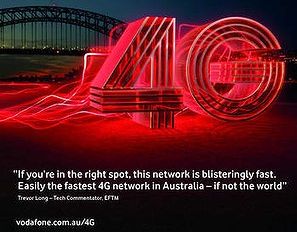 Open Signal has a huge sample of mobile data speeds taken from networks around the world. The data is gathered from free Android and iPhone apps which test network speed and quality and then record and forward the information for compilation by Open Signal. The data are accessible on line and can be viewed here.
Open Signal has a huge sample of mobile data speeds taken from networks around the world. The data is gathered from free Android and iPhone apps which test network speed and quality and then record and forward the information for compilation by Open Signal. The data are accessible on line and can be viewed here.
Obviously the information is a moving feast and it represents the experience of just Android and iPhone users who have taken the trouble to download and run the app. None the less these should be pretty good selection of mobile users to choose to get an a good idea of the networks data speeds and quality.
Below is a table compiled from the Open Signal data for Australia for each operator and totally and for 3G and 4G separately and totally. Just for interest it shows the total results for a couple of other relatively 4G advanced countries USA Sweden and UK.
| 3G | 4G | All | |||||||
| Down Mbps | Up Mbps | Ping mS | Down Mbps | Up Mbps | Ping mS | Down Mbps | Up Mbps | Ping mS | |
| Optus | 2.4 | 0.9 | 311 | 18.4 | 5.9 | 103 | 3.0 | 1.1 | 305 |
| Telstra | 4.2 | 1.1 | 288 | 21.0 | 4.9 | 89 | 8.2 | 2.0 | 241 |
| Vodafone | 3.2 | 1.2 | 232 | 36.6 | 4.3 | 71 | 4.9 | 1.3 | 224 |
| All Aus | 3.2 | 1.0 | 286 | 22.0 | 5.0 | 89 | 5.5 | 1.5 | 263 |
| All UK | 4.1 | 1.5 | 300 | ||||||
| All USA | 3.9 | 3.0 | 231 | ||||||
| All Sweden | 8.7 | 2.3 | 248 | ||||||
The data shows that as expected Telstra has the fastest network overall. Telstra is 2.7 times faster than Optus and 67% faster than Vodafone. This results from Telstra’s earlier start with LTE (Sept 2011 Vrs Jul 20 12 for Optus and Jun 2013 for Vodafone). As a result Telstra has over 4 million LTE devices, probably double that of Optus, and four times the number reported by Vodafone. With 4G speeds recorded as just under 7 times that of 3G in the downlink and 5 times faster in the uplink the more of the faster services you have the better your overall speed.
It is interesting that the data supports the claims made by Vodafone that theirs is the fastest 4G network. Vodafone shows up as 75% faster than Telstra and twice as fast as Optus. You would expect this since Vodafone have only one quarter of the 4G services of Telstra and in the two large markets of Sydney and Melbourne they have more continuous 1800 MHz spectrum (2X20 MHz Vrs 2X15MHz for Telstra).
These numbers will move around. As Vodafone increases its 4G base you would expect to see its overall speed increase and its superiority of 4G speed diminish as the limited spectrum is shared by a larger base of devices. Optus and Telstra will benefit from deployment of their new 700MHz and 2600MHz spectrum from early 2015 and the ability of LTE Advanced to bond discontinuous spectrum. Optus has the additional potential to link its holdings of 2.3 and 3.4 GHz spectrum. For example Optus has reported a “Giga Site” trial employing 287 MHz of spectrum in the 700-MHz, 900-MHz, 1800-MHz, 2.1-GHz, 2.3-GHz, 2.6-GHz and 3.5-GHz bands to achieve a 2.3 Gbps mobile data channel – how it that for bragging rights. Just who will produce commercial devices for this and when we will have to wait and see.